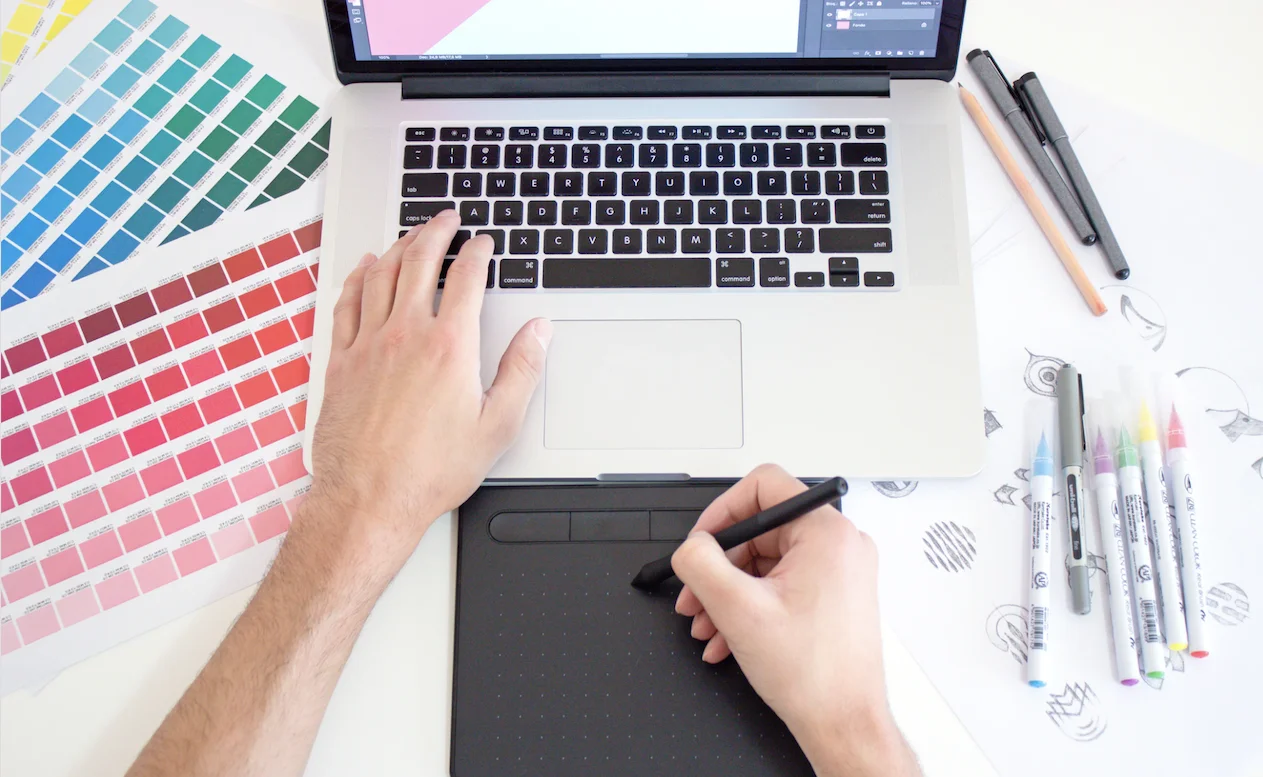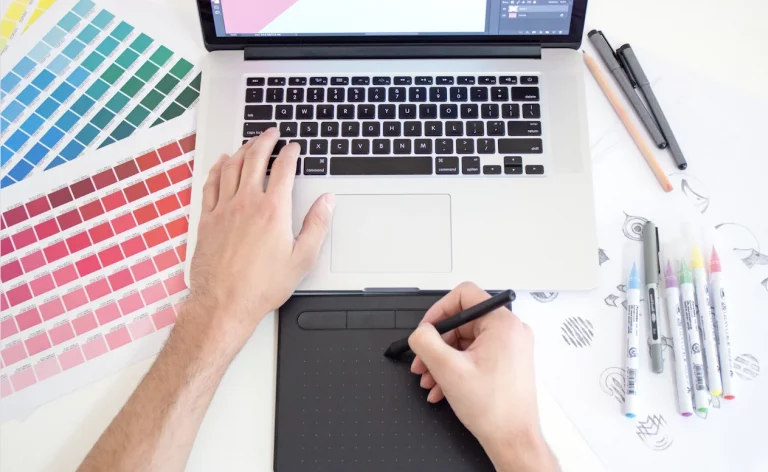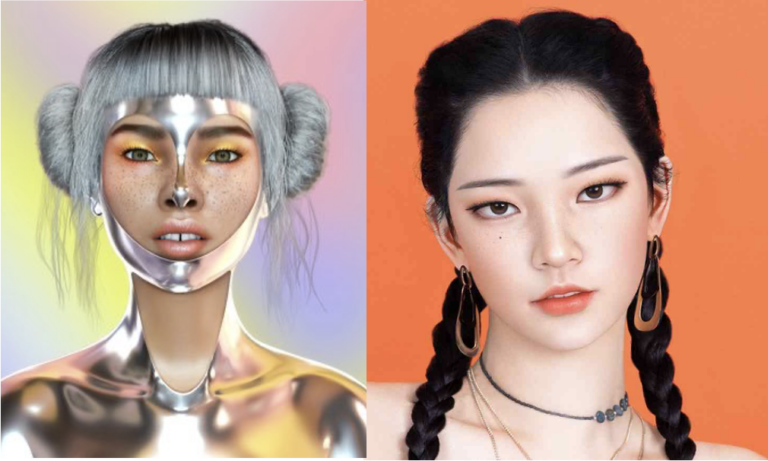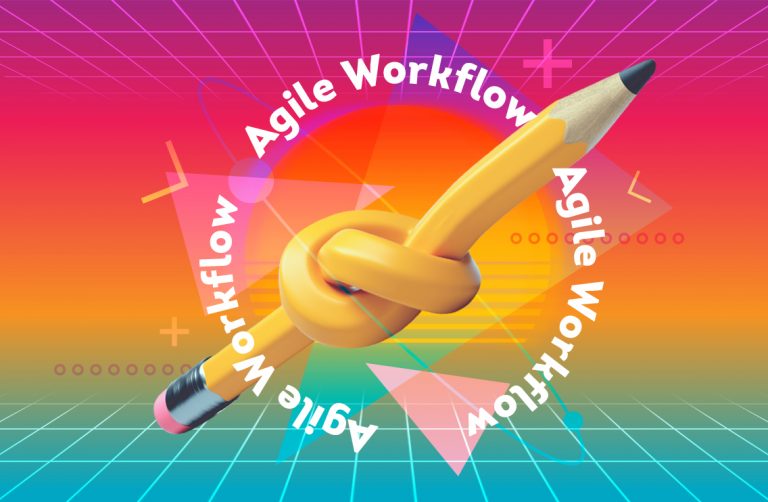Behind every innovative packaging, arresting book cover, memorable logo or even that cool mobile phone you’re holding is a designer who has worked his or her ass off to let these see the light of day. Every little design detail has been considered, analysed and filtered through countless cups of coffee – preferably black, no sugar. But reaching this state of design mastery takes a combination of talent, curiosity, sense of wonder, inspiration, practice and a knack for seeing things just a little bit differently. I’ve been working as a designer in the Singapore brand and advertising scene for more than 10 years now and I can say that designers…yup, we live in our own fantasia. Journey with us and you will see that this world can be–literally and metaphorically–a more beautiful place to live in.
Let me show you how designers and non-designers see the world.
Colours
What you see is not always what you get. When non-designers tell us they want the logo to have some blue in it, we become confused. Our mind just goes huh? Because to us, blue has so many shades, tones, values, intensities and names. Here are a few that might not sound familiar: Cobalt, Persian, azure, royal, Oxford, cyan…the list goes on. Knowing the different shades helps us all appreciate the world’s natural beauty more. You will start to see the different nuances in the sky, ocean, pool, etc. The world becomes alive and electric, not flat. At work, when communicating with designers, it certainly helps minimise miscommunication when we all speak the same design language. So you don’t end up with, say, aqua when you really meant teal.
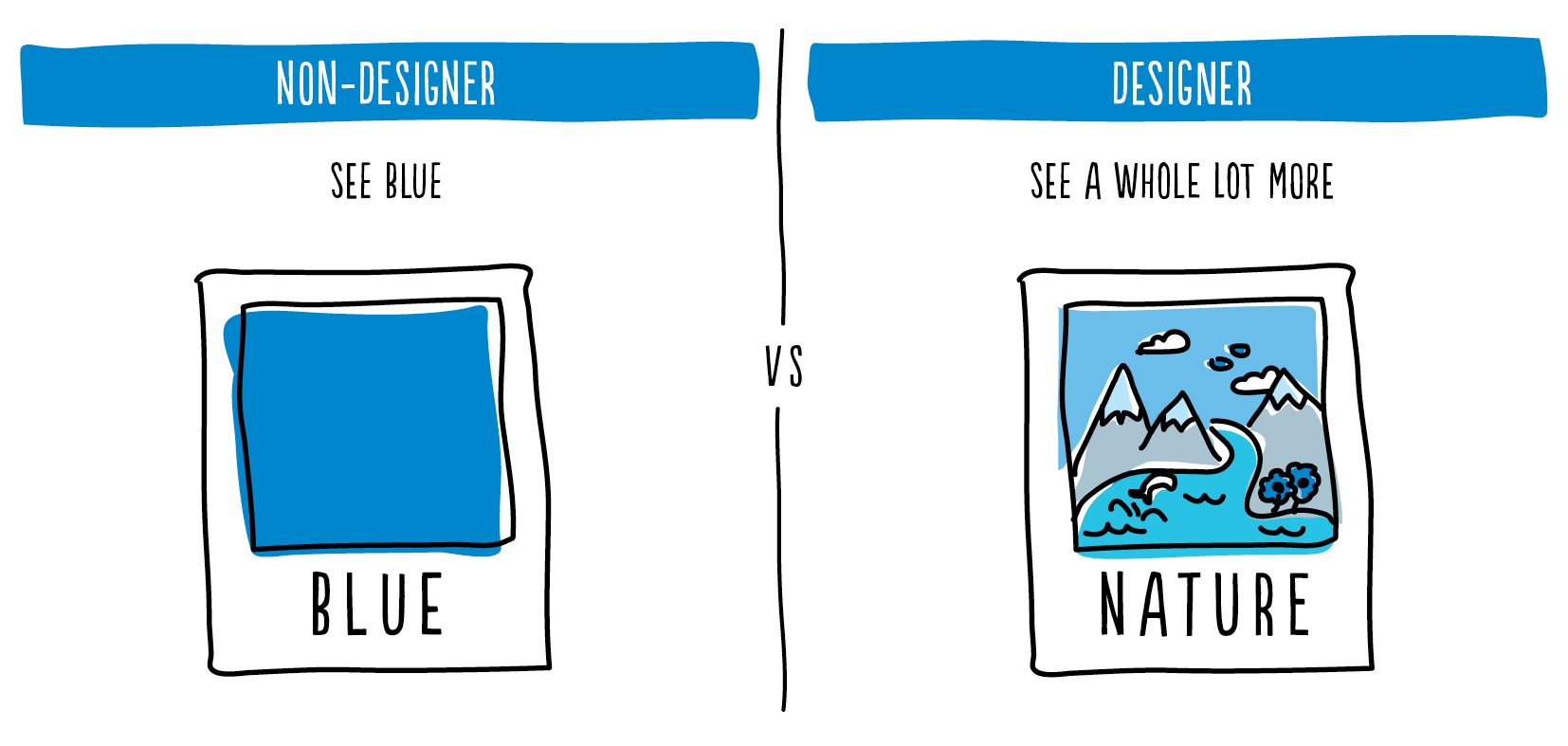
Product packaging
When non-designers buy a product, they do so to satisfy their shopaholic inner self or fulfill a functional need. But designers go 1 step further. We look at the box, the printing techniques, the mechanism and so on. Yes, we do judge a product by its packaging! Even if the product is bad, if the packaging is nice, we will buy it. And it will land on our cool product shelf for display. Sure, you might say that sometimes the packaging of a product will catch your attention too. But you likely won’t buy it because of how the box looks, would you? That’s where designers and non-designers are different. Non-designers buy products, we buy product designs.
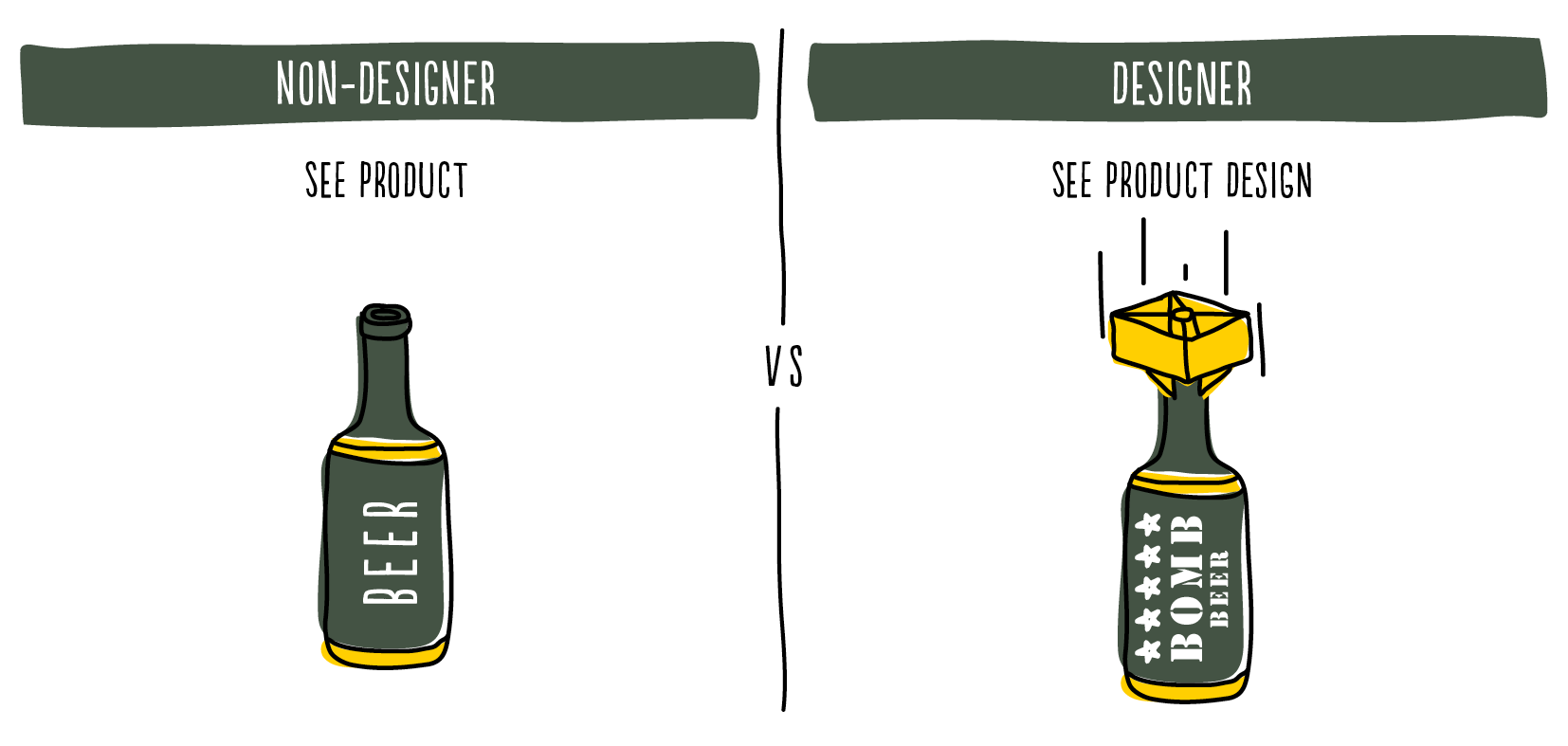
Notebooks
To most, a notebook is a small book or binder of paper pages, often ruled, used for recording notes or memoranda at work or in school. It serves to document and remind. But for designers, we see a blank canvas where most of our ideas come alive. To many non-designers the notebook is a destination point where information is deposited and archived, but for us designers, it’s where the best branding and marketing ideas start to sprout.
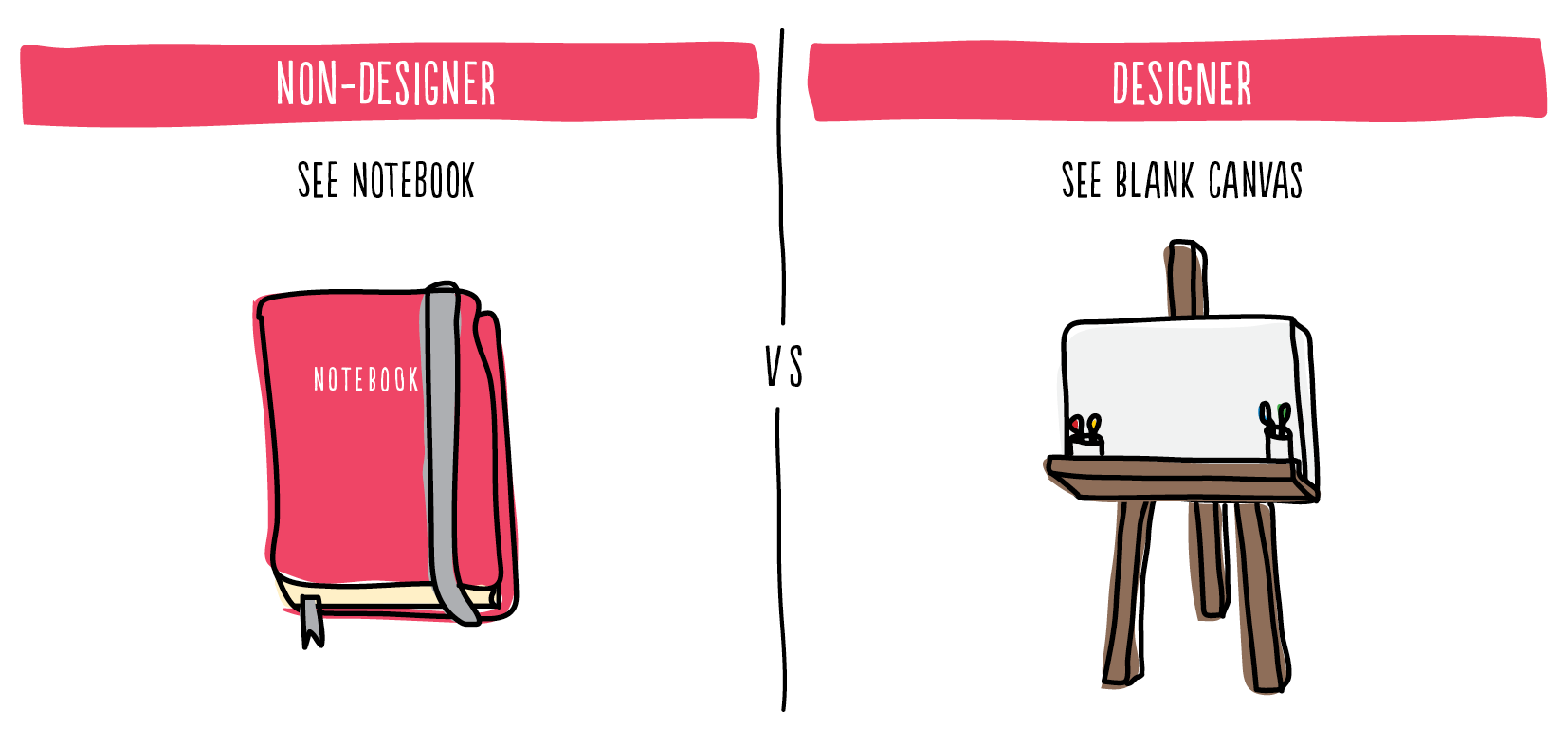
Software updates
Usually, when people see this little window popping up on their devices asking them to update their software or operating system, they either postpone or cancel it altogether. I’m sure they have their reasons, but one main reason, I think, is familiarity. Once it’s updated, the interface may change, there may be new functions to learn, etc. But designers crave these updates. Especially for the design software and tools that we use. New functions and tools mean we can do even better work at a more productive pace and lets us play and discover new things and creative expressions as well. Basically, software updates to us are like an amusement park with all the thrills, excitement and fun that come with it. Time to play, and play hard!
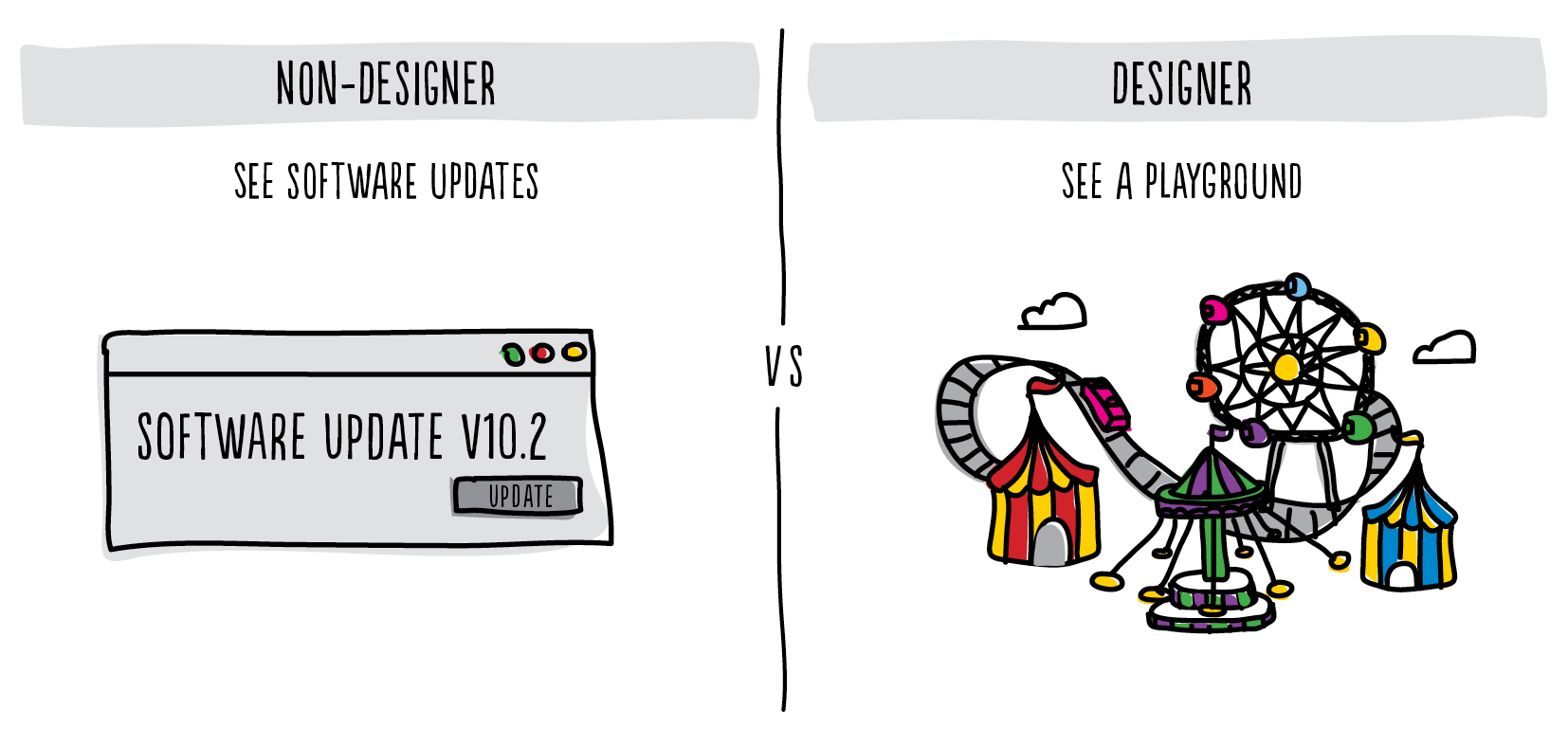
Coffee
Nowadays, cafés are everywhere. When you step into one, the atmosphere they exude is so relaxing. Dim lights, dark woods, comfy sofa, chill-out music…feels just like home. But science says that coffee (or more specifically, caffeine) actually suppresses adenosine function and causes the body to produce more of the hormones epinephrine and cortisol that are responsible for providing the body with an extra surge of energy and adrenaline. Enough of this science stuff! What I’m trying to say is that, if this drink is supposed to make you come alive, how come people visit cafés to ‘have a break and chill’? While non-designers may drink coffee to feel more relaxed, designers skew more towards the scientific reasoning. We drink it to recharge, become alive again and push the boundaries of our ideas.
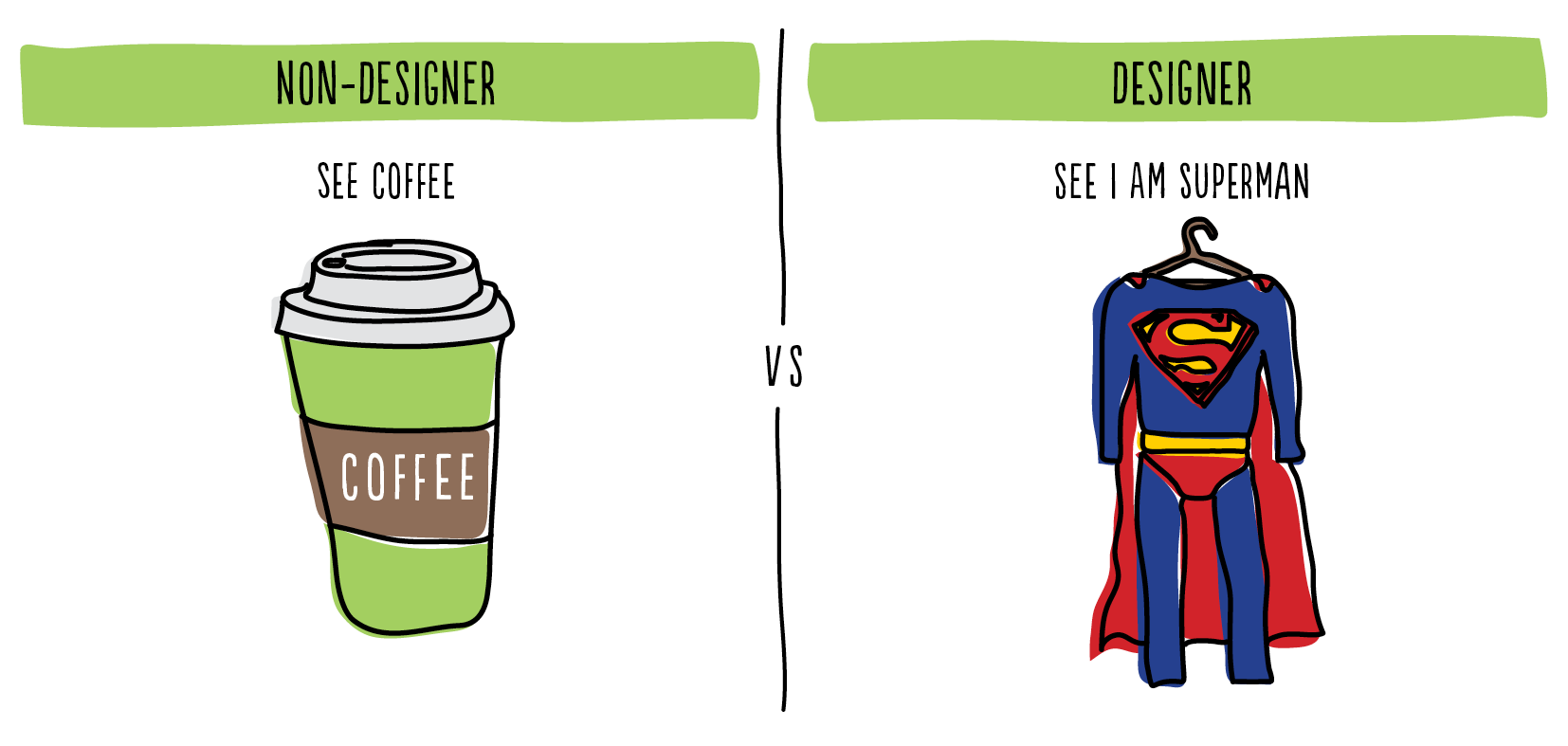
Uh…toilets
To most, a toilet is a fixed receptacle into which they do their number 1s and 2s. That’s the main purpose of course but designers often use the humble toilet as a meditation or ideation room. Why? It’s tranquil. Our mind is at peace, and I for one, have had moments of ahas while sitting on the can. For me, it happens in the toilet, but for other designers, ideas may dawn while they’re showering, riding the bus home or even sitting on a bench at the Botanic Gardens. Ideas come to us in the most unexpected places as long as we keep our eyes and minds open…even in the most unexpected places.
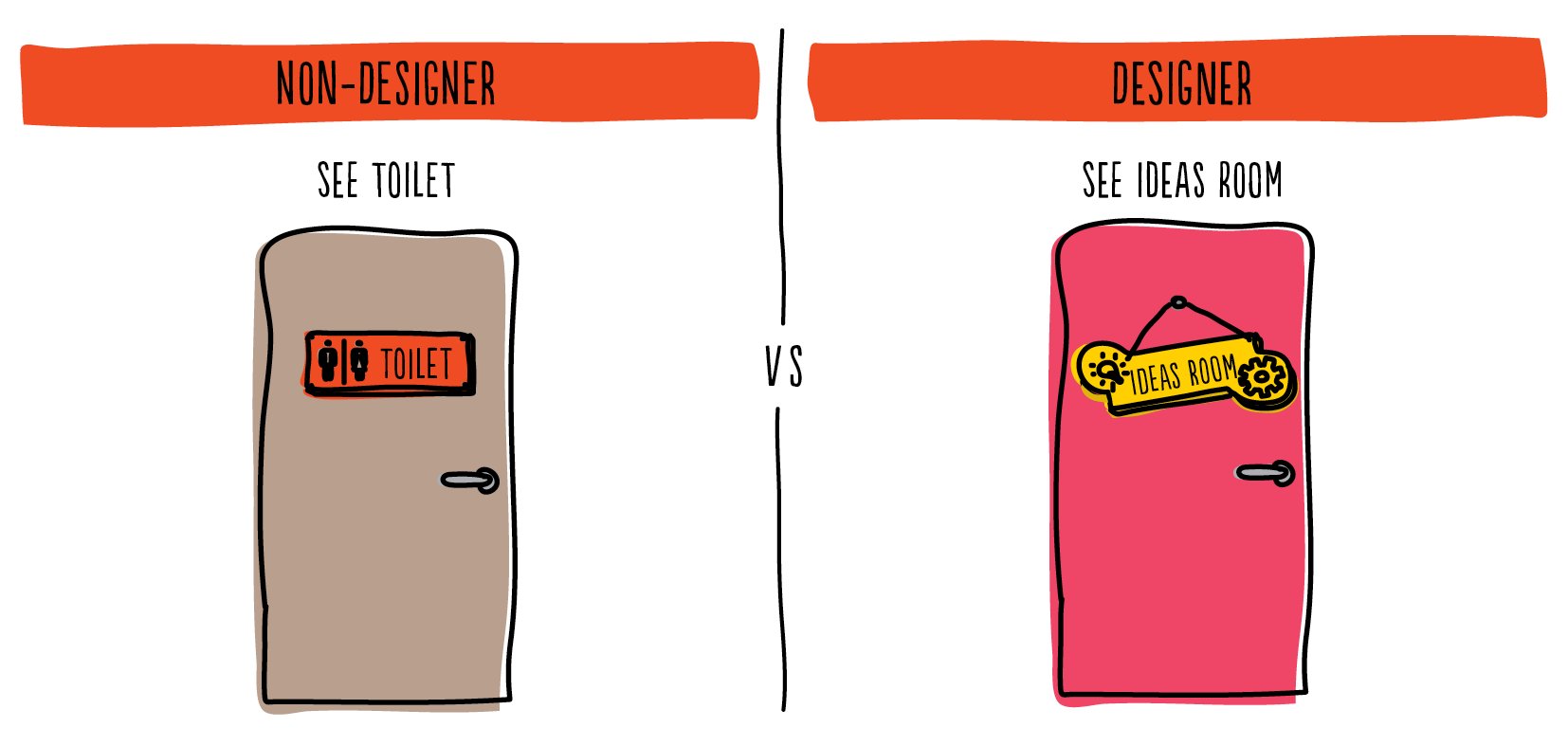
As you can tell, we designers are a funny lot. We practically live in a different world and relish and examine every little detail. We notice things like the golden ratio, leading, kerning, contrast, hierarchy, visual balance and whatnot. Through these lenses, we see beauty and possibilities in the world around us, even in the most mundane things and unexpected places. I hope you have enjoyed taking a short tour into our world, and I look forward to showing you more.


